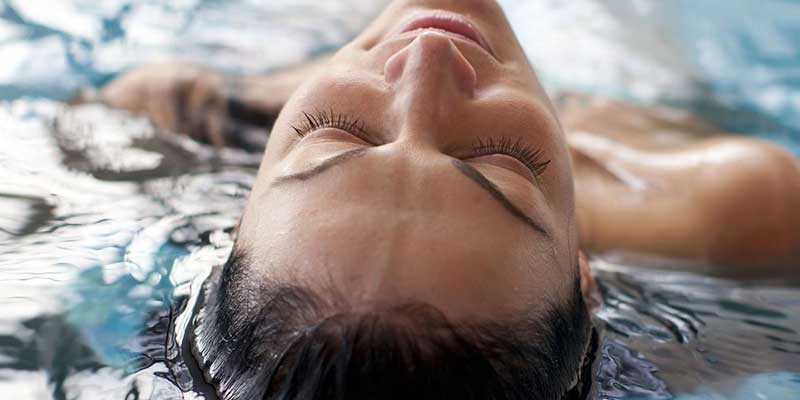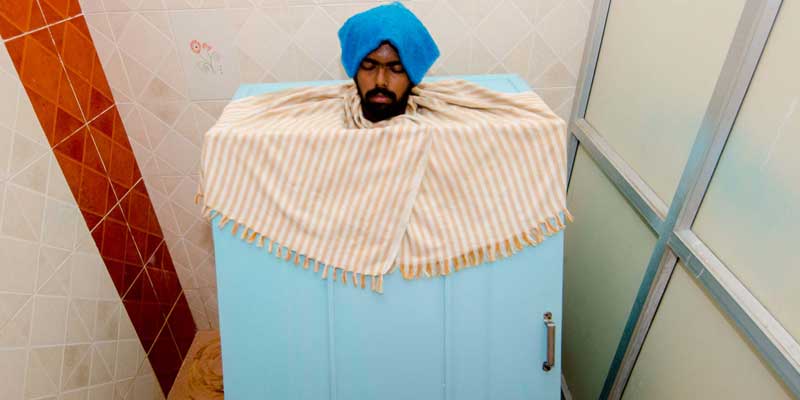HYDROTHERAPY
Water is the most ancient of all remedial agents for diseases. Hydrotherapy, or water therapy, is the use of water (hot, cold, steam, or ice) both internally and externally to relieve discomfort and promote physical well-being. The ancient Egyptians, Hebrews, Greeks, Persians and Hindus all utilized water in the treatment of diseases.
Vincent Priessnitz, called as Father of Hydrotherapy treated his own chest wound with cold packs, in emulation of a dog that he had once observed bathing a wound in a cool mountain stream. He had treated patients with baths and packs using cold spring water.
In the early nineteenth century, Sebastian Kneipp, known as the Father of Modern Hydrotherapy, a Bavarian priest began treating his parishioners with cold water applications after he himself was cured of tuberculosis. Kneipp’s book “My Water Cure” was published in 1886. Father Sebastian Kneipp said “Water contains healing property; it is the simplest, cheapest and if correctly used can be the safest remedy”. In 2015, the German UNESCO Committee decided to recognize “Kneippen” water-treating as a traditional knowledge and practice according to the teachings of Sebastian Kneipp as a form of intangible cultural heritage. To date, hydrotherapy is used to prevent and treat acute and chronic conditions. Hydriatic applications in various forms and in various temperatures can produce different effects on different systems of the body.
Superficial cold application may cause physiological reactions such as decrease in local metabolic function, local edema, nerve conduction velocity (NCV), muscle spasm and increase in local anaesthetic effects.
Cardiovascular system
Cold exposure to small surface area produces compensatory vasodilatation in deeper vascular system resulting in increased blood flow to the tissues underlying the site of exposure. This vascular reaction occurs mainly to maintain constant deep tissue temperature.
Respiratory System
Two main factors affecting oxygen transport during immersion are temperature and hydrostatic pressure. Oxygen transport is improved above neutral temperature, due to the increase in cardiac output resulting from the combined actions of hydrostatic counter pressure and body heating. Below neutral temperature, oxygen transport is altered. At any of the temperatures tested, the pulmonary tissue volume and arterial blood gases are not significantly affected.
Nervous System
Temperature and pressure of water in aquatic or hydrotherapy can block nociceptors by acting on thermal receptors and mechanoreceptors . This exerts a positive effect on spinal segmental mechanisms, which is useful for painful condition. Aquatic exercise program improves pain, spasms, disability, fatigue, depression, and autonomy in patient with multiple sclerosis.
Musculo skeletal System
A systematic review on management of fibromyalgia syndrome (FMS) through hydrotherapy described as “strong evidence for the use of hydrotherapy in the management of FMS” showed positive outcomes for pain, tender point count, and health-status.
- Weston M, Taber C, Casagranda L, Cornwall M. Changes in local blood volume during cold gel pack application to traumatized ankles. J Orthop Sports PhysTher. 1994;19:197–9.
- Choukroun ML, Varene P. Adjustments in oxygen transport during head-out immersion in water at different temperatures. J Appl Physiol. 1990;68:1475–80
- Bender T, Karag¨ulle Z, B´alint GP, Gutenbrunner C, B´alint PV, Sukenik S. Hydrotherapy, balneotherapy, and spa treatment in pain management. Rheumatol Int. 2005;25:220–4.
- Castro-Sánchez AM, Matarán-Peñarrocha GA, Lara-Palomo I, Saavedra-Hernández M, Arroyo-Morales M, Moreno-Lorenzo C. Hydrotherapy for the treatment of pain in people with multiple sclerosis: A randomized controlled trial. Evid Based Complement Alternat Med 2012; 2012.
- McVeigh JG, McGaughey H, Hall M, Kane P. The effectiveness of hydrotherapy in the management of fibromyalgia syndrome: A systematic review. Rheumatol Int. 2008;29:119–30.









